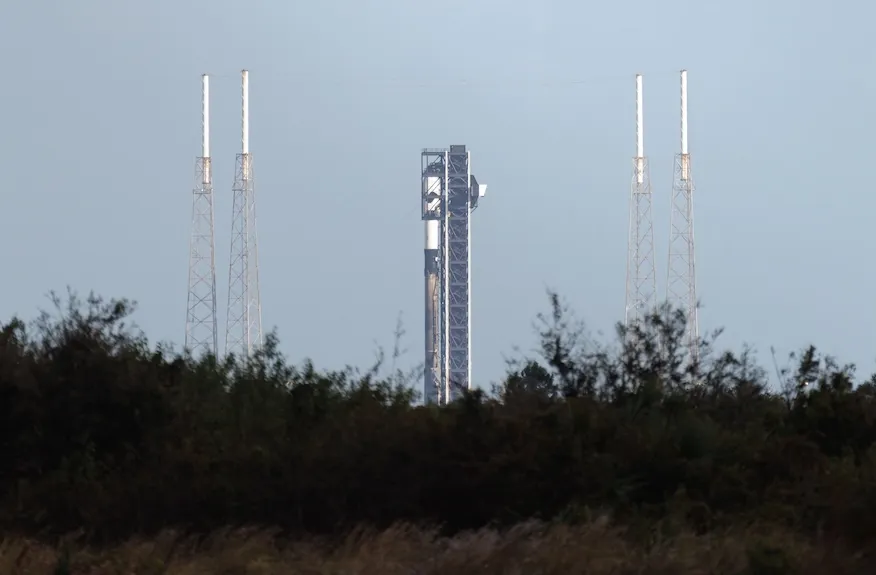SpaceX Launches 28 Starlink V2 Mini Satellites from Cape Canaveral
On the morning of October 30, 2023, SpaceX successfully launched its Falcon 9 rocket, transporting 28 Starlink V2 Mini satellites into orbit from Cape Canaveral, Florida. This launch marks another milestone in the company’s ongoing mission to enhance global internet coverage through their satellite constellation. With an increasing demand for high-speed internet connectivity, especially in underserved areas, the significance of this launch cannot be overstated.
Launch Details
The Falcon 9 rocket lifted off at 10:47 AM EDT from Cape Canaveral Space Force Station, after a flawless countdown and no significant weather issues. This mission was designated as Starlink 5-5 and is part of SpaceX’s broader plan to deploy thousands of satellites in low Earth orbit (LEO).
Elon Musk, the CEO of SpaceX, expressed his enthusiasm before the launch, stating, “These new V2 Mini satellites will provide faster internet speeds and improved connectivity for our users, paving the way for bigger things in the future of satellite communication.”
What’s New with Starlink V2 Mini?
The Starlink V2 Mini satellites incorporate several advancements over earlier versions. The greatest improvements are the increase in bandwidth capabilities and better energy-efficient technology, enabling them to support more users simultaneously. This satellite version also enhances performance in challenging environments, allowing for reliable service in remote and rural locations where traditional internet connections may be lacking or non-existent.
Live Updates from the Launch Pad
As the countdown reached zero, the Falcon 9’s engines roared to life, propelling the rocket into the sky. Viewers from around the world tuned in for live coverage, sharing the excitement on social media platforms. Below are some live updates that emerged during and after the launch:
- 10:47 AM: Liftoff! Falcon 9 is off the launch pad and heading to space with 28 Starlink V2 Mini satellites.
- 10:50 AM: Stage separation occurred as planned; Falcon 9 continues its journey to deploy the satellites.
- 10:53 AM: First stage successfully performed its boostback burn, preparing for landing.
- 10:59 AM: Second stage is now in operation, and the satellites are preparing for deployment.
- 11:00 AM: Deployment successful! The 28 Starlink V2 Mini satellites have been released into orbit.
- 11:05 AM: Falcon 9’s first stage lands successfully on the drone ship stationed at sea.
Impact of the Starlink Network
The launch of the Starlink V2 Mini satellites is part of SpaceX’s goal to provide worldwide satellite internet. Currently, the Starlink network serves more than 1.5 million users across various continents and is rapidly expanding its customer base. With the addition of these new satellites, users can expect increased reliability and lower latency in internet services.
The implications for rural electrification and emergency services are profound as well. Better connectivity can significantly enhance telephone services and internet access in areas affected by natural disasters, making it easier for responders to coordinate assistance and for affected individuals to connect with family and emergency services.
Challenges and Considerations
Despite the positive advancements, challenges regarding space debris and the environmental impact of launching thousands of satellites weigh heavily on the conversation about SpaceX’s ambitious plans. Critics argue that, without proper regulatory frameworks, the growing number of satellites risks creating a crowded and potentially hazardous orbital environment.
Additionally, some astronomers have voiced their concerns about the interference of satellite trails with astronomical observations. SpaceX has pledged to work closely with regulatory bodies and scientific communities to mitigate these issues, employing measures such as designing satellites to be less reflective and adjusting altitude to minimize impact.
The Road Ahead for SpaceX and Starlink
As of now, SpaceX continues to prepare for future launches of its Starlink satellites, with plans to deploy even more satellites in the coming months. The goal is to have a completed constellation that will provide comprehensive internet coverage worldwide by the end of 2024.
In the interim, launches like today’s will not only expand the network further but also allow SpaceX to refine its technology while gathering valuable data on performance. This iterative process will be critical for the long-term success of the Starlink initiative.
Community Engagement
SpaceX has initiated various community engagement efforts to inform and educate the public on the benefits and responsibilities that come with satellite development and deployment. Town halls and online forums are being held to ensure local communities are engaged and heard regarding their concerns about satellite launches.
As the telecommunications landscape continually evolves, companies like SpaceX play pivotal roles in shaping the future of connectivity. The results of today’s launch and future endeavors will help unveil the next chapter in global internet services.
Conclusion
Today’s successful launch of 28 Starlink V2 Mini satellites marks another achievement for SpaceX in its mission to increase global internet connectivity. The advances in satellite technology promise improved internet speeds and a more robust service that is critical for connecting underserved regions across the globe.
Stay tuned for more updates on future launches and the continued expansion of the Starlink network. With every successful mission, SpaceX propels us closer to realizing the vision of providing high-speed internet access to everyone, everywhere.






